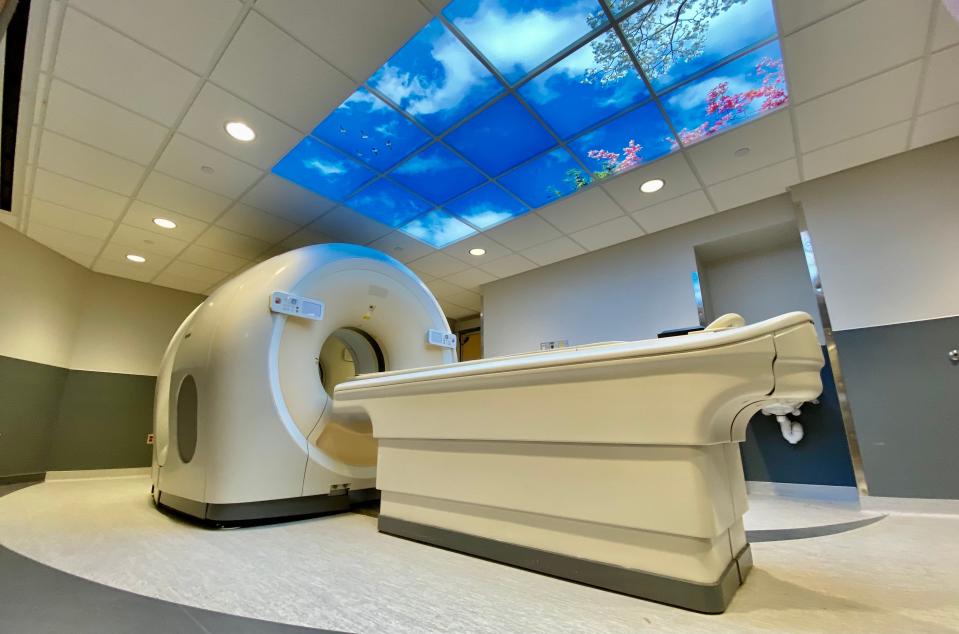'Amazing technology': Austin's ARA Diagnostic becoming hub for cutting-edge prostate cancer treatment
When you think about ARA Diagnostic Imaging, you might picture a place where you get a variety of scans done: ultrasounds, mammograms, MRIs, X-rays and CT scans.
ARA, though, provides treatments for all kinds of things from cancer to varicose veins, and its ARA Theranostics Center in Austin is a place to which people around the country are traveling for care.
The facility on West 38th Street, which opened in 2021, became recognized as a center of excellence in radiopharmaceutical therapy by the Society of Nuclear Medicine and Molecular Imaging and is now expanding those offerings.
This summer, it became one of a few sites in the United States that is able to provide a new radiopharmaceutical therapy for prostate cancer called Pluvicto.
The center has seen patients come to Austin for this treatment from the Northeast, Florida and California, said Dr. Simon Trubek, chief molecular radiologist at ARA Diagnostic Imaging.
Pluvicto received FDA approval this year along with the diagnostic agent Locametz, and both are part of a growing group of radioactive medications that are coming to market.

Cancer screenings:Regular wellness checks are crucial for men's health, Central Texas doctors say
Doctors have been using radioactive medications since the 1960s on thyroid cancers, and beginning five years ago, they were able to treat neuroendocrine tumors that show up in the stomach, pancreas or bowel with the intravenous medication Lutathera.
Pluvicto represents the next step in radioactive medications. It targets the DNA of the cancer and has been approved for use in people with advanced prostate cancer that has resisted other treatments.
With the combination of Pluvicto and a targeting agent, doctors are able to identify cancer tumors in a metabolic way and then destroy them, Trubek said.
First doctors find the cancer by giving the imaging agent, which targets only the prostate tumor by identifying tumor cells and attaching to the lining of those cells. Those cells then light up when doctors look at the body with a PET scan.
"If we can see it, then we can treat it," Trubek said.
He is able to catch cancer that has spread much sooner, before it has destroyed lymph nodes or bone, using this technology, he said.
Then Pluvicto is given. It targets the DNA of the prostate cancer, damaging it, preventing it from being able to function or multiply. It doesn't damage the non-prostate cancer cells, as chemotherapy or radiation would. The remnants of the cancer cells will be eaten by other cells, and the tumor will shrink until it is gone.
"It just melts away," Trubek said, and the drug then leaves the body through the urine.
"It's amazing technology," he said.
Cancer stories:'This can't be real:' Austin woman's brain cancer caught early thanks to some odd symptoms
A typical round of treatment would be one Pluvicto injection every six weeks for six rounds. Because of the radioactive properties, patients do have to isolate from family members by not sharing a bed, touching or sharing food for a few days after each treatment. Side effects include fatigue, dry mouth, decreased appetite, nausea, anemia and constipation.
Once a patient goes through the six-treatment cycle, doctors do another PET scan with an targeting imaging agent to see what progress has been made.
Prostate cancer is the first type to get this new version of radiopharmaceuticals. Early clinical trials have started for renal cancer and the brain cancer glioblastoma. Trubek also expects ovarian and colon cancer to follow.
Technology advances: Will you get breast cancer in five years? Austin-based Clairity working on predictive tech
He believes that even more specific radiopharmaceuticals will be developed that will target the particular genetic sequence of each person's cancer.
"It's going to be tailor-made therapy," Trubek said. "It's a little while away, but we will see it in our lifetime."
ARA Diagnostic Imaging has been tapped to do some clinical trials for radiopharmaceuticals.
"We're definitely on the cutting edge of these types of therapies," he said.
Even though the ARA Theranostics Center opened last year, Trubek said, it is expected to outgrow its location soon and need to expand because of the demand for this type of treatment.
Expanding treatment: Austin women share stories of sixth most common cancer you might not have heard about
This article originally appeared on Austin American-Statesman: Austin's ARA becoming hub for cutting-edge prostate cancer treatment

